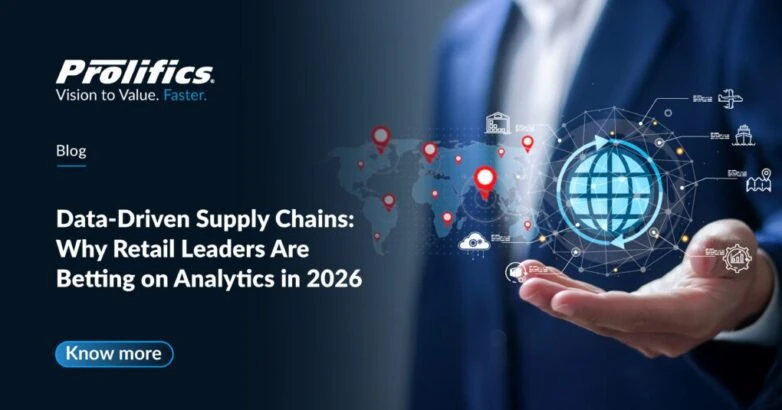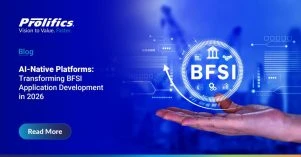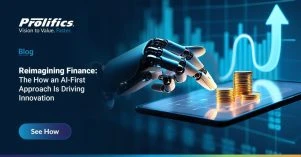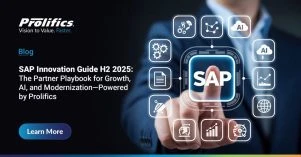Data-Driven Supply Chains are revolutionizing the retail and CPG industry in 2026. Globalization, rising customer expectations, e-commerce acceleration, and unpredictable market conditions have made traditional supply chain management outdated. According to Gartner, over 70% of retail leaders say their organizations lack real-time supply chain visibility, creating delays, cost overruns, and poor customer experiences.
This is where the data-driven supply chain is reshaping the future of supply chain operations. By combining AI in supply chain processes, advanced analytics, and automation, organizations are moving from reactive problem-solving to proactive, predictive planning.
At Prolifics, we enable clients to implement a data-driven retail strategy by modernizing supply chain systems, unlocking supply chain analytics and retail insights, and creating pathways for demand forecasting, retail, and inventory optimization.
What Is a Data-Driven Supply Chain?
A data-driven supply chain is an intelligent, digitally connected ecosystem that uses analytics and automation to drive decisions across sourcing, warehousing, logistics, and delivery. Unlike traditional supply chains, which often rely on spreadsheets and delayed reporting, data-driven models harness real-time insights to continuously optimize operations.
Key traits include:
- Predictive capabilities: Instead of relying only on historical data, companies now use retail demand forecasting with AI to anticipate consumer needs with remarkable accuracy. These models analyze patterns from sales, promotions, weather, and even social media to predict demand shifts days or weeks in advance. This foresight helps retailers avoid both costly overstocking and frustrating stockouts.
- Agility: A truly data-driven supply chain thrives on adaptability. By combining predictive insights with automation, businesses can reroute shipments or reallocate inventory in near real time to respond to sudden changes, whether that’s a supply shortage, a surge in e-commerce orders, or unexpected disruptions in transportation. This agility reduces downtime, lowers costs, and keeps customers satisfied.
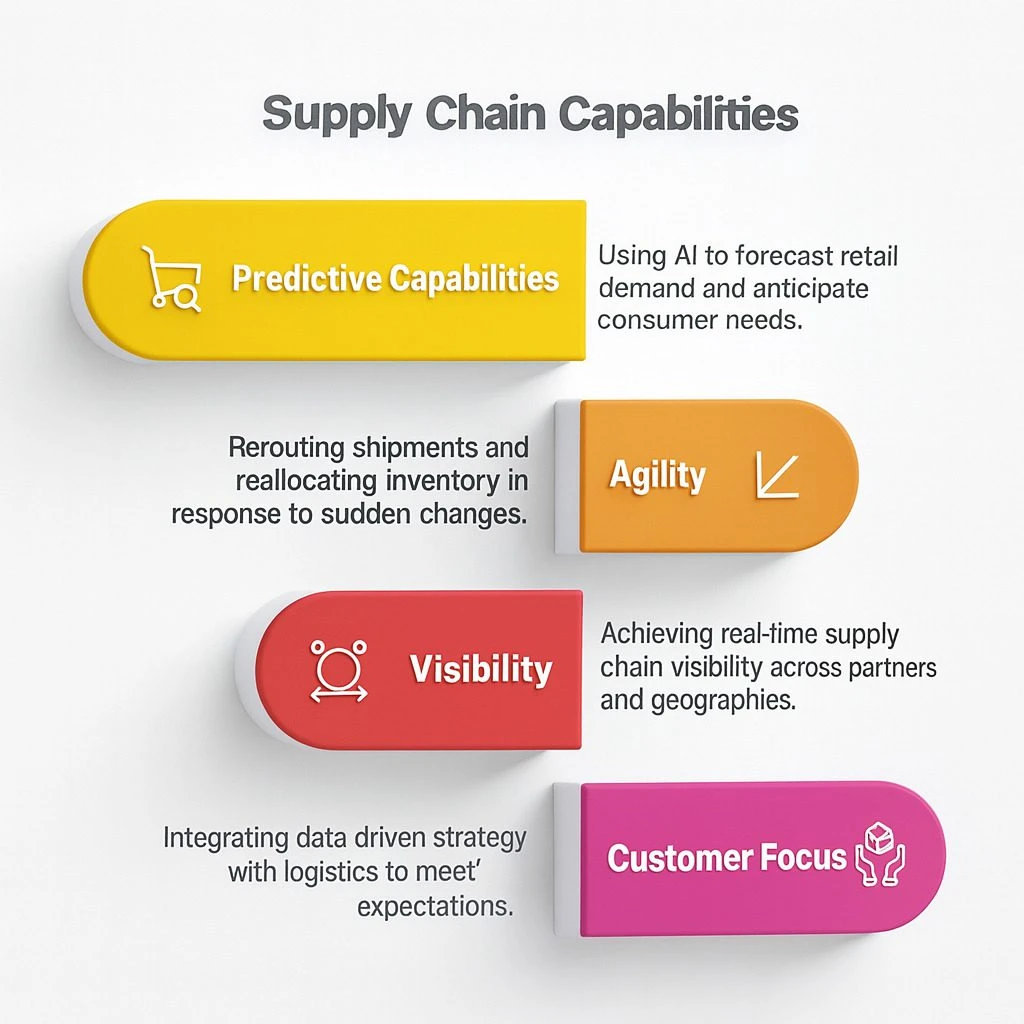
- Visibility: One of the biggest challenges in supply chain management has been the lack of end-to-end transparency. With modern analytics, businesses achieve real-time supply chain visibility across partners, suppliers, warehouses, and distributors. This allows leaders to spot bottlenecks instantly, track products from origin to shelf, and proactively address risks before they impact operations.
- Customer focus: Today’s shoppers expect fast, accurate, and personalized delivery experiences. By aligning operations with a data-driven retail strategy, organizations can synchronize last-mile logistics with customer expectations, offering flexible delivery windows, real-time updates, and even personalized promotions tied to fulfillment data. This not only enhances customer satisfaction but also builds long-term loyalty in an increasingly competitive market.
By shifting to this model, companies are not only modernizing operations but also aligning supply chain performance with business growth and customer loyalty.
Why Retail, CPG & Logistics Leaders Are Moving to Analytics in 2026
1. Real-Time Visibility and Forecasting
Retail leaders increasingly recognize that seeing problems too late leads to lost sales, wasted resources, and reputational damage. By adopting real-time supply chain visibility, companies can:
- Monitor shipments across multiple carriers in real time.
- Adjust production and distribution dynamically based on demand.
- Use predictive analytics for demand forecasting in retail, factoring in seasonal peaks, economic conditions, and even social trends.
Real-world value: According to McKinsey, retailers using advanced demand forecasting reduced errors by up to 50% and lowered inventory carrying costs by 10–15%.
Keyword integration: how retailers use data to improve supply chains and demand forecasting in retail.
2. Cost Efficiency and Waste Reduction
In an industry where margins are razor-thin, efficiency is everything. With supply chain analytics, retail companies can:
- Identify excess stock and reallocate it to where it’s most needed.
- Predict slow-moving SKUs and take corrective actions (discounting, redistribution, bundling).
- Improve inventory optimization in retail by balancing safety stock with demand accuracy.
Real-world value: A global apparel retailer used analytics to reduce stockouts by 30% and cut holding costs by 20%, proving the benefits of supply chain analytics for retail.
3. Customer-Centric Logistics
The modern shopper expects fast, accurate, and sustainable delivery options. A data-driven retail strategy empowers businesses to:
- Offer precise delivery windows that match actual capability.
- Use customer data to personalize shipping offers and loyalty perks.
- Dynamically reroute shipments to ensure on-time delivery.
In fact, Deloitte reports that over 60% of consumers are willing to switch brands after two poor delivery experiences, making analytics a direct driver of loyalty and revenue.
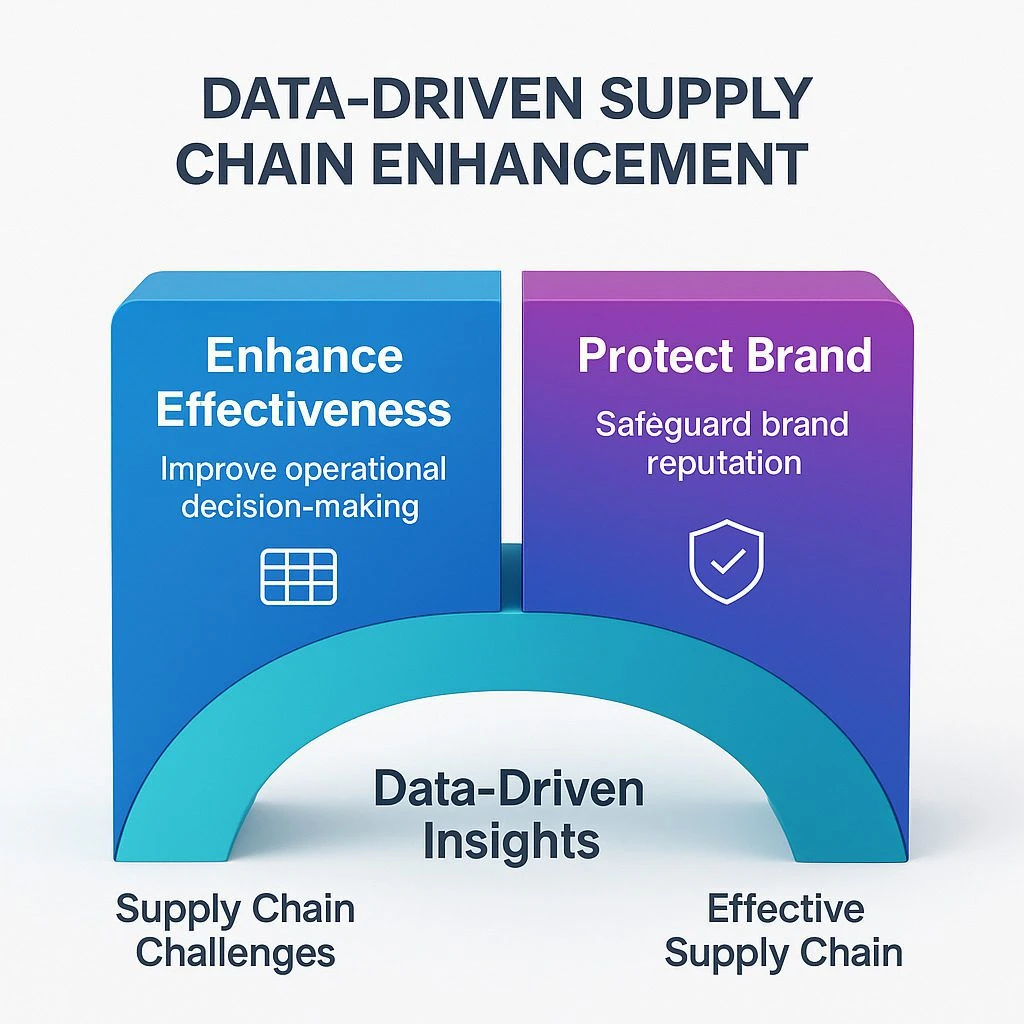
4. Risk & Compliance Management
Supply chains are not only complex, but they are also highly regulated. From sustainability to trade compliance, businesses must ensure accountability at every stage. By applying analytics, companies can:
- Track carbon emissions and optimize for greener logistics.
- Ensure compliance with import/export regulations in multiple regions.
- Detect anomalies that may signal fraud or inefficiency.
This is a prime example of overcoming supply chain challenges with data, using visibility not only to improve efficiency but also to safeguard brand trust.
Challenges of Becoming Data-Driven
Adopting a data-driven approach is powerful but requires overcoming systemic barriers:
- Legacy IT systems: Many retailers still run on outdated ERP systems that can’t process real-time data.
- Data silos: Information is fragmented across suppliers, distributors, and logistics providers.
- Talent gaps: The shortage of analytics experts makes it difficult to scale advanced capabilities.
- Cultural adoption: Teams accustomed to manual decision-making may resist trusting AI-driven insights.
For many companies, the real challenge isn’t access to data, it’s knowing how to implement a data-driven supply chain strategy at scale while ensuring adoption across the business.
How Prolifics Helps Enable Data-Driven Supply Chains
Prolifics bridges this gap by offering solutions that help businesses build the foundations of a data-driven supply chain:
- Cloud Migration for Supply Chain Systems: Moving outdated platforms to scalable, modern environments that support real-time analytics and enable Cloud-Powered Logistics.
- AI & Automation for Predictive Insights: Embedding AI in supply chain processes for forecasting, inventory optimization, and intelligent routing.
- Integration of ERP + Analytics Tools: Creating unified data ecosystems that eliminate silos and enable seamless decision-making.
- Proof of Technology Labs: Safe, small-scale environments where companies can test innovations before full rollout.
CTA: Talk to our Retail Innovation Experts today and see how Prolifics can help.
Real-World Example
A global retail brand worked with Prolifics to integrate predictive analytics into its supply chain. Within the first year, the company reduced delivery delays by 20%, cut waste by optimizing inventory allocation, and significantly improved customer satisfaction. By leveraging retail demand forecasting with AI, the retailer could align stock levels with purchasing trends, reducing both overstock and stockouts.
Outlook – The Supply Chain of 2030
The future of the supply chain will look radically different by 2030. What’s emerging now as best practice will soon become the industry standard:
- Digital Twins: Full-scale simulations of supply networks, enabling retailers to test scenarios such as supplier disruptions or demand spikes before they happen.
- Autonomous Operations: AI systems making day-to-day supply chain decisions with minimal human intervention.
- Sustainable Logistics: Analytics embedded to track emissions, optimize transportation routes, and achieve net-zero goals.
- LLM-enabled operations: AI assistants helping managers analyze reports, simulate strategies, and recommend actions in plain language.
Retailers who adopt data-driven supply chain strategies in 2026 will be positioned to lead this transformation, not play catch-up.
Key Takeaway
The supply chains of the future will be data-driven, customer-focused, and resilient. By embracing analytics, AI, and automation in 2026, retail and CPG leaders can unlock smarter forecasting, achieve cost efficiency, and gain the real-time supply chain visibility needed to stay competitive.
Book a Supply Chain Modernization Assessment with Prolifics and take the first step toward your intelligent, future-ready supply chain.

